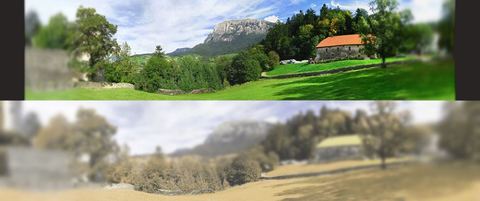
Animal Sight Problems: Myopic Like a Mole, Really?
Share
You've probably heard this expression a lot: being myopic like a mole . If we understand what this means for us humans, what about moles? Are they really that short-sighted? In this article, we will focus on the vision of animals , whether domestic or wild.
Vision and sight problems
It is true that animals can lose part of their ability to see (for those with good vision) following an accident, for example. But it is rare that this is hereditary: selection plays its role, the weaker animals would not survive. For our friends, pets ( others are our friends too! ) is different. As natural selection and the law of the strongest no longer apply, they can develop vision disturbances and this can become hereditary. Animals are therefore, just like us, susceptible to visual problems.
Even if animals can suffer from sight problems, in particular cataracts, for which operations are possible , you'll never see animals with wooden glasses and that's a shame because PSIR's L'Orangeoise looks great on this lion!
That they can see in the night ( nyctalope, I promise that's not a bad word! ) or by day (mainly diurnal animals), animals generally have a vision that is adapted to the environment in which they evolve but also to their place in the animal kingdom and in their food pyramid. Predators like cats and dogs, for example, have better vision than many animals, including us, at detecting movement and seeing at night. On the other hand, their visual acuity (their ability to distinguish details) is less good than ours.
Color perception and visual field
You may have heard that your animals see in black and white … well it is wrong. Even though at night all cats are gray, what is true is that they distinguish colors in a different way than we do, especially red. As said above, their ability to perceive light is itself much superior to us, because their retina is very rich in rods.
Another An interesting element about the sight of animals is the placement of their eyes and therefore their resulting visual field . Preys often have their eyes positioned to the side, which allows them to have wider vision and therefore better monitor the surroundings, unlike predators who have a smaller field of vision but eyes on the front, more efficient.

And the mole in all this?
Reptiles, insects, fish all have a different outlook and adapt to their environment. Humans have a very general vision that allows them to "see" in many situations: at night, underwater ... And the mole in all of this? As incredible as it may seem, this little mammal is born with impeccable eyesight ! It is because they live mainly underground that they lose their visual acuity and eventually become blind. Moles therefore use smell, hearing and touch it to orient yourself!

